How To Make Sushi? Ingredients, Types And Method
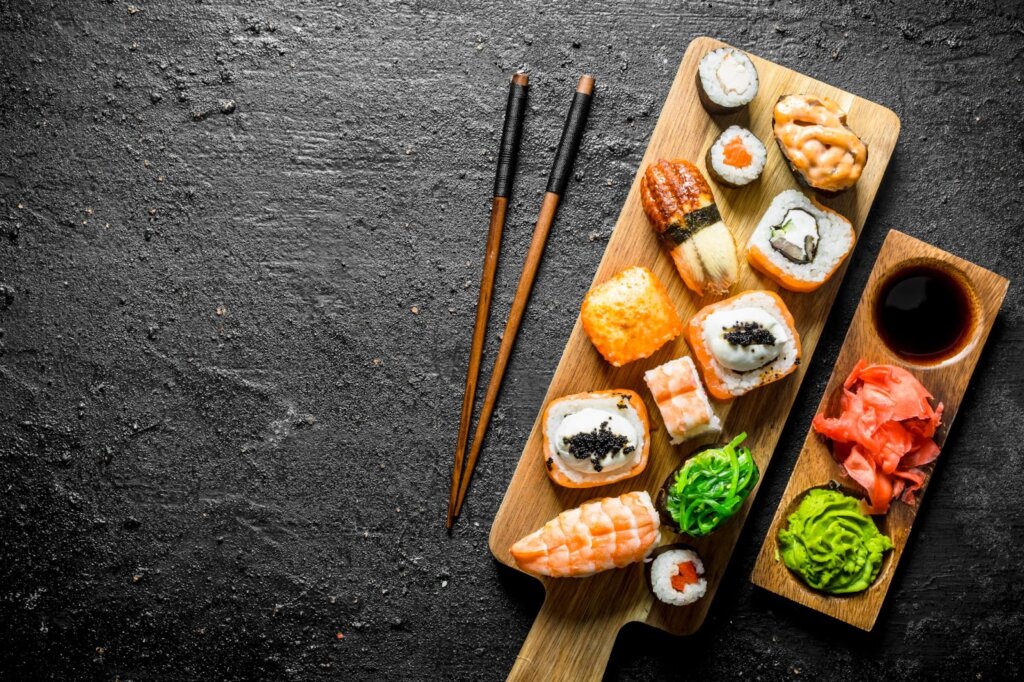
Table of Contents
What is Sushi?
Sushi, a rice dish of Japanese cuisine, that consists of cooked rice with the addition of vinegar and multiple vegetables, egg, raw seafood. It is served cold. Restaurants in Japan have sushi as their main dish. Sushi 🍣has now gained popularity in the United States and other countries.
How To Make Sushi?
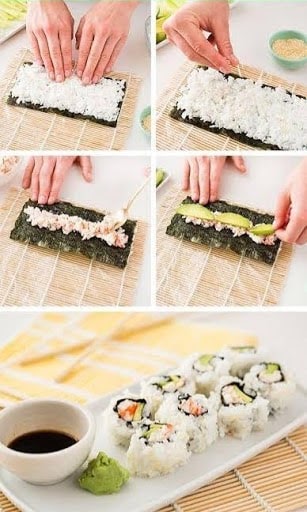
Sushi Recipe:
Ingredients
For the sushi rice:
- 300g sushi rice
- 100 ml rice
- Wine vinegar 2 tbsp
- Golden caster sugar
For the Japanese mayonnaise:
- 3 tbsp mayonnaise
- 1 tbsp rice vinegar
- 1 tbsp soy sauce
For the sushi:
- 25g bag nori (seaweed) sheets
- Select from the following fillings:
Cucumber strips, white crab meat, canned tuna, smoked salmon, red pepper, avocado, spring onion.
Additional serving:
- Pickled ginger
- Soy sauce
Method
Step 1:
If you want to make Sushi Rolls, pat out the rice and lay a nori sheet on the mat, put the shiny side down. Dip hands in vinegar water and pat rice on top of 1 cm layer.
Step 2:
Now evenly spread some Japanese mayonnaise with a spoon in the middle of the rice serving.
Step 3:
Then, add the filling according to your taste and favourite flavours. Roll and lift the edge of the mat over the rice, apply light pressure to keep everything in place.
Step 4:
Apply pressure to stick the sides. At the edge of the rice, brush with light water and roll into a tight one. Wrap in cling film, remove the mat and roll in cling film before sushi cuts into thick slices.
Step 5:
Layer over the smoked salmon and line a loaf tin with the cling film. Spread a thin layer of salmon inside on top of the cling film to make a pressed Sushi. Now cover with rice and press about 3 cm of rice over the fish. Fold the cling film to make the roll tight. Then remove the cling film
Step 6:
If you want to make Sushi Balls, choose your favourite topping. Grab the cling film and place the topping on it. Use wet hands to roll tight small balls and place them on the topping. Take the corners of the cling film together and tighten them into the walnut-shaped balls by twisting, then unwrap and serve.
Preparation Time:
40 minutes
Tools To Be Used:
- These are some tools to be used in making Sushi:
- Knife
- Rolling Mat
- Cutting Board
- Sushi Rice
- Rice Cooker
- Rice Paddle
- Sushi Cooker
- Bowl of Water
- Bamboo Mat
How To Cut Fish For Sushi?
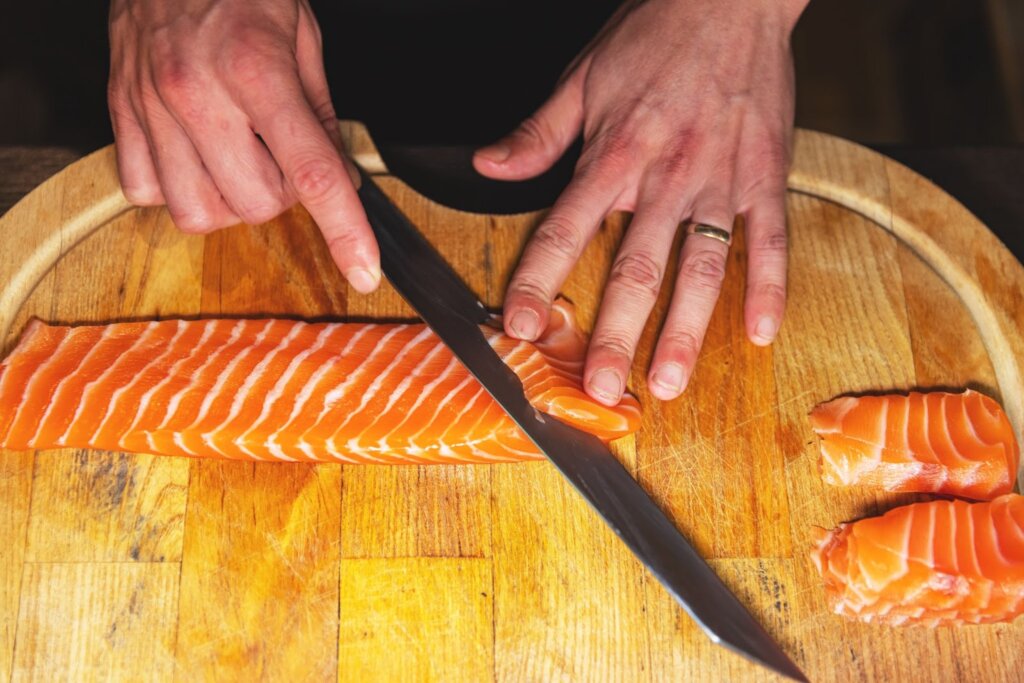
Steps:
- First, cut off the triangular tip and cut the tuna into blocks of Saku. The head, fins and tail are not included. The blocks of tuna are shaped according to how you like them.
- Then, remove tendons and skin from the fish. Now after cutting the fish into blocks, you have to cut the fish into even thinner slices of about an inch. The slices should be cut at a thirty-degree angle, always pull the knife backwards while slicing fish pieces.
How To Cook Shrimp For Sushi?
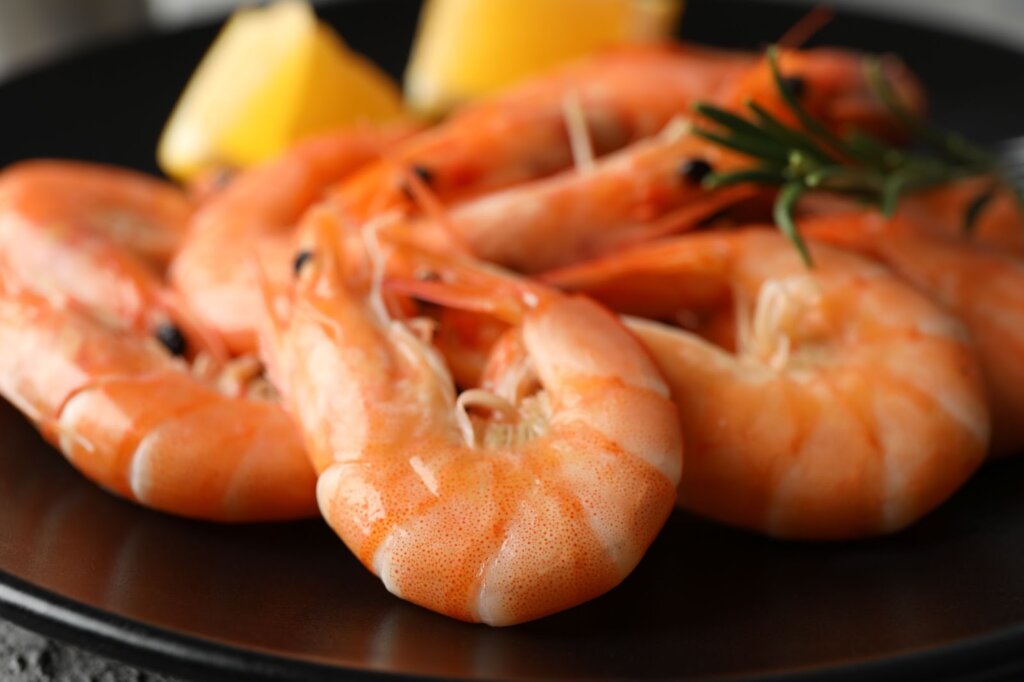
Steps:
- First, straighten the shrimp with one hand and insert a wooden skewer between the shell and body with the other hand. Repeat the process with the other shrimp.
- Add the salt to the boiling water and add the shrimp. Cook the shrimp for about 30 seconds, stir the water to make sure the shrimp is cooked. Remove the shrimp and place them into an ice bath to end the cooking.
- Now, remove the skewers from the shrimp and peel the shrimp by removing the whole shell and tail. Place the shrimp flat on its side and cut a small, angled corner from the head and tail. Make a long slit from the belly to the head and tail.
- Open the flat belly and place each shrimp in the ice water bowl to get rid of any other debris. Now dab both sides of the shrimp with a towel to dry and then use it in sushi. Marinate the shrimp in vinegar for a short time to give a unique flavour.
If you are a food lover then, you may also like
Types Of Sushi
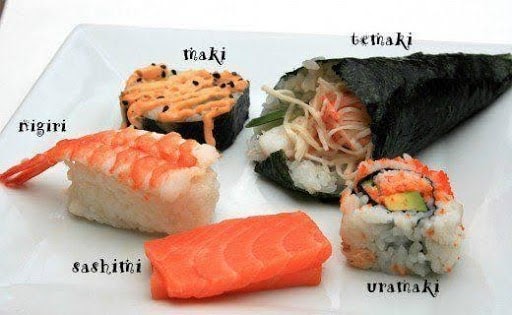
There are many types of Sushi, here only the most famous types of Sushi are mentioned;
Nigiri
Nigiri comprises thinly sliced, raw fish placed on top of sushi rice. Some forms of Nigiri also contain partly cooked fish, and some are wrapped in seafood to give a new flavour like unagi or Kani nigiri. Nigiri is the most famous and traditional type of Sushi. Some common forms of nigiri are sake (salmon), ahi (tuna) and Ebi (shrimp). It is mostly served in pairs but sometimes Nigiri serving consists of 6-12 pieces.
Sashimi
Sashimi comprises thin slices of raw fish like tuna and salmon. This type of Sushi is not served with rice, it is most commonly served with daikon radish.
Sashimi consists of thin slices of raw fish such as salmon or tuna. It is not served with sushi rice but is usually served on a bed of daikon radish. A versatile raw fish can be found in sashimi, depending on the amount you order. If we talk about Appetizer sashimi, it is around nine pieces and entrees have about 16-20 pieces.
Maki
Maki is rolled sushi, the most traditional form of Japanese food. Fish, vegetables and other ingredients are rolled in rice and then wrapped with seaweed. A roll consists of six pieces, but you can customize the order according to your taste.
These rolls can be anything, from raw fish to vegetables. Even restaurants use chicken as an alternative to fish for those who don’t eat fish.
Uramaki
Uramaki, western-style sushi, opposite to what Maki is. In Uramaki, sushi rice is on the outside and seaweed on the inside. The ingredients can vary, some common rolls consist of Rainbow Roll, Spider Roll and Dragon Roll. Uramaki rolls can have six to nine pieces, depending on the order. Restaurants also modify the rolls according to their themes.
Temaki
Temaki is unique in the way that these rolls are rolled with hands, other rolls are rolled by the bamboo mat. Temaki rolls are coned and larger than standard sushi rolls. If you order Temaki, you will get just one roll. But it varies according to every restaurant that how many rolls you get.
Tempura Rolls
Tempura Rolls are one of the main items at Sushi Restaurants. They are deep-fried maki or uramaki rolls. These rolls are prepared by frying fish or vegetables in a mixture made of flour, eggs and water. This type of Sushi is more famous in Western countries. Shrimp tempura rolls are the most popular rolls, but some special rolls are Tiger Rolls, Dragon Rolls and Church Rolls.







